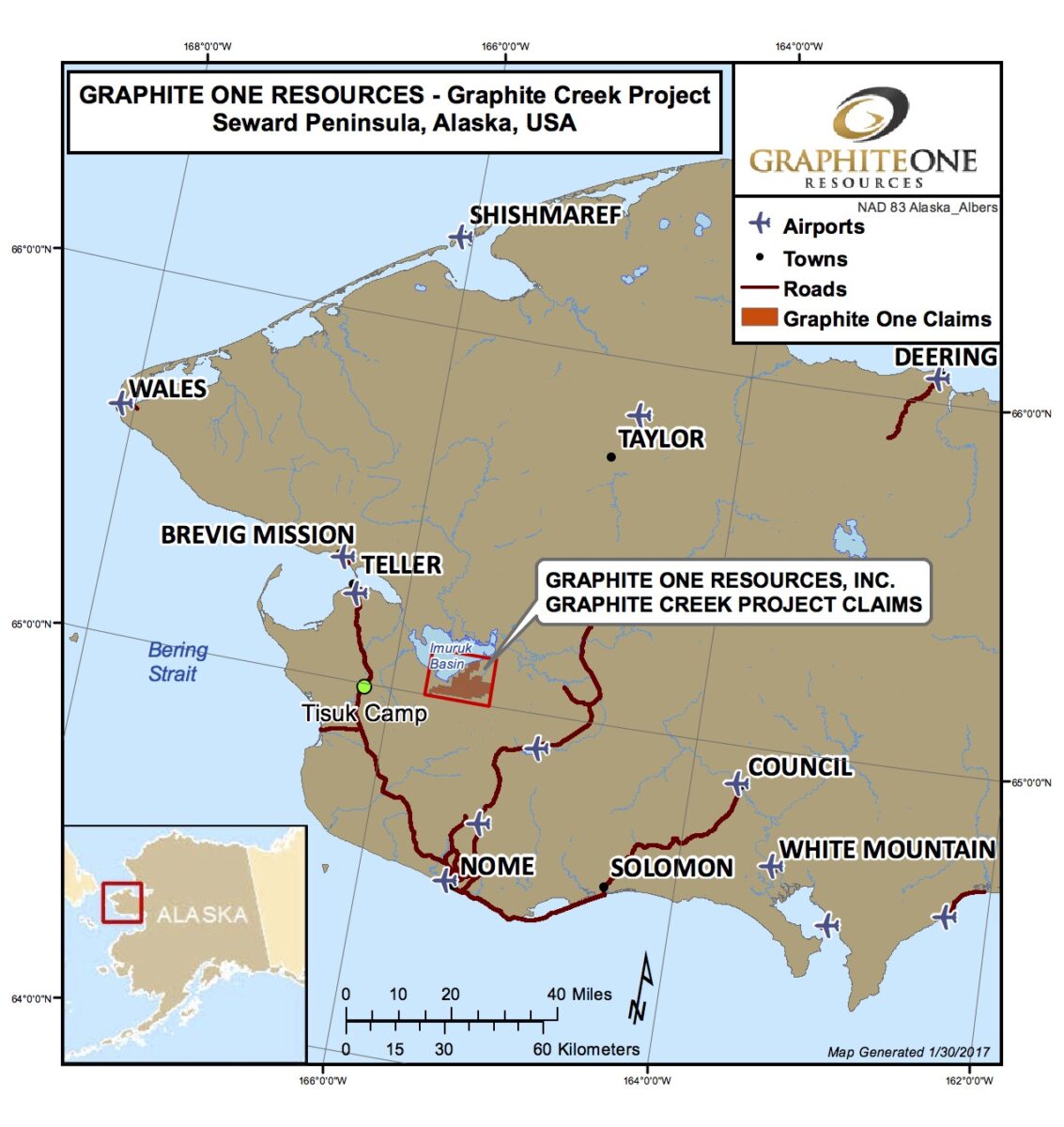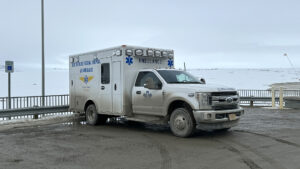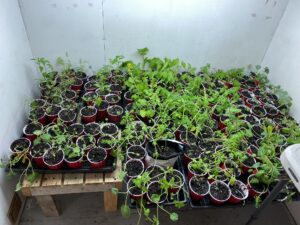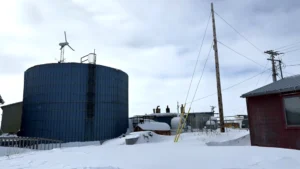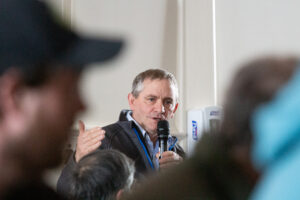Graphite One Resource’s proposed graphite project in Western Alaska seeks to eventually become the largest graphite mine in the country, with a life of at least 40 years. Before it can set up a mine, however, the company needs to gather more environmental data and continue community outreach with local residents, who are concerned about how subsistence resources will be affected.
KNOM’s Davis Hovey reports:
Seven years ago, Graphite One began its exploration program at a project site near the Kigluaik Mountains, less than 60 miles north of Nome. Now, the company is planning to finish up its pre-feasibility study by the end of 2019, which involves more test drilling.
Stan Foo, the Chief Operating Officer for the company in Alaska, explains the project’s progress thus far.
“Based on our drilling last year, we were able to improve the mineral resource to the measured, indicated category, and that allows us to go to the pre-feasibility study stage. We will continue to drill and continue to do the engineering work to get to the feasibility stage, and with additional drilling and gaining confidence in the deposit, we will work towards having a proven and probable ore reserve. But we are not at that point yet.”
According to Foo, Graphite One’s summer work will include 2,000 meters of exploratory drilling at their summer camp site.
The project’s permitting manager, Ed Fogels, notes that his main job is to pay attention to one of the most important factors during the exploration process: water quality.
“So we have to look at how this mine will be designed and have to account for essentially every drop of water that is in this mining system, to make sure we know where it goes, what its quality is, and what kind of treatment we would potentially need if we ever have to discharge some water. We’ll always have to meet or exceed federal and state water quality standards. For the fisheries, the human health, that’s all driven by water qualities, so that is of paramount importance to the project.”
Graphite One won’t go through the most significant part of the permitting process, however, until all of the environmental baseline data is gathered from the pre-feasibility and feasibility studies over the course of the next two years.
Meanwhile, some stakeholders from Western Alaska are already expressing concerns about the future of the Graphite Creek Project and its impact on the region.
Brandon Ahmasuk, a longtime resident of Nome, toured the project site last fall (August 2018). Ahmasuk is concerned about potential impacts to subsistence resources based on his own research of graphite mining. He says there’s still a chance a preventative measure could fail, graphite dust could cover the land, or a catastrophic event of some kind could contaminate the water nearby, once mining begins.
He noted that the current drilling operations involve core holes marked at the toe of the mountain, but other than that, Graphite One’s current work is minimal. Ahmasuk also says the company has a helicopter that flies over the area and double checks the operations to make sure everything is cleaned up at the end of the season. He says he commends Graphite One for directly communicating with residents and local entities about the status of the project and its potential impacts. Ahmasuk feels the company is going about it the right way, compared to other mining outfits in the past.
Henry Olanna, Jr., of Brevig Mission is one of seven regional residents serving on the Subsistence Advisory Council for the project. The other six are: Albert Oquilluk, Vernon Rock, Ruby Topkok, Elmer Seetot, Jr., Isaac Okleasik, and Allan J. Okpealuk. Graphite One brought Olanna and the other members onboard to share their input about the nearby subsistence resources.
He says the project site, located near the Imuruk Basin outside of Teller, is a very important area for local residents.
“That’s an area up there where they’re (Graphite One) flying around a chopper and maybe keep(ing) some people and animals away from the mountain. And if they ever use all that water, I don’t know what will happen to our fish up there. There’s all kind of fish up there in creeks.”
Olanna says he and other residents from Teller and Brevig have expressed concerns about the Graphite Creek Project from the beginning, but it continues to move forward.
According to Foo, there are potential impacts for this project, but the company plans to minimize those as much as possible and hopefully avoid them altogether. He describes the project as a relatively small mine with a very simple process: one that’s not chemically intensive.
“That mine can operate, create local employment and economic benefits for the nearby villages and Seward Peninsula, and the subsistence lifestyle can still thrive. What we’ve seen from other projects is when people have a good job, are earning a good living, they’re supporting their families better and they are able to become better subsistence providers.”
Foo says the company strongly believes the Graphite Creek Project can mesh well with a subsistence lifestyle.
Ahmasuk says, rather than lessening the damage to subsistence resources after the damage has already been done, he’d rather the company focus on preventative measures now so future contamination doesn’t happen.
Blake Bogart, the Nome representative for the project, has been with Graphite One for five years, handling their logistics and expediting work. As a resident of Nome, Bogart says it’s fulfilling for him to work on the project:
“If it’s done right and responsibly, it could change the lives of others for the better. The ore from this mine could help shape the way we as a society do things in the future.”
Despite subsistence concerns, the Graphite Creek Project team will be active this summer at their Tisuk River Camp, in the middle of salmon fishing season. Foo says people traveling out on the Teller road, near the project site, or in the area can expect to see some air traffic.
“We’ll have some helicopter activity supporting the drilling project, which is about 16 miles from the camp, on the north face of the Kigluaik Mountains. And we’ll make sure we are cognizant of the hunting and fishing seasons, and adjust our helicopter flight patterns, so as not to interfere with any of the activities that are going on around us.”
If you have any concerns about Graphite One’s activities in Western Alaska or want to know more about their job opportunities at the Tisuk River camp, contact graphiteone@uqaqti.com.
Image at top: A map of the proposed Graphite Creek mine site. Image credit: Graphite One Resources (2017).

